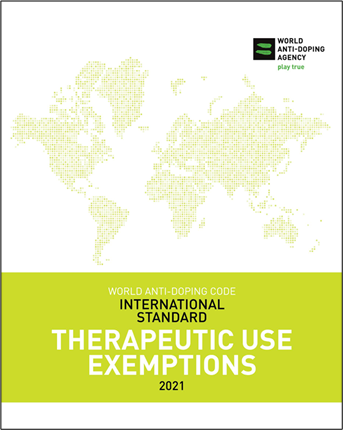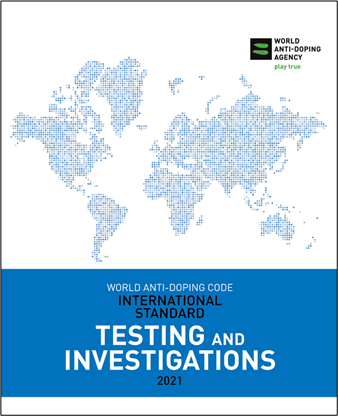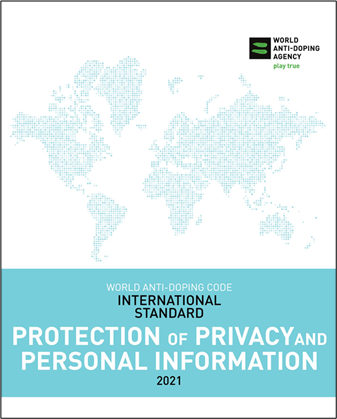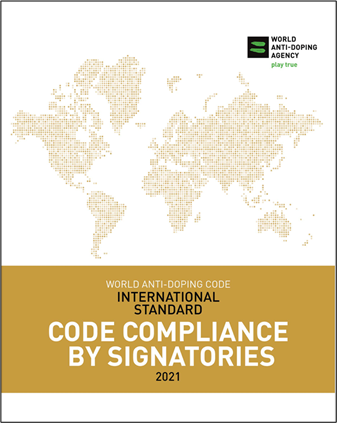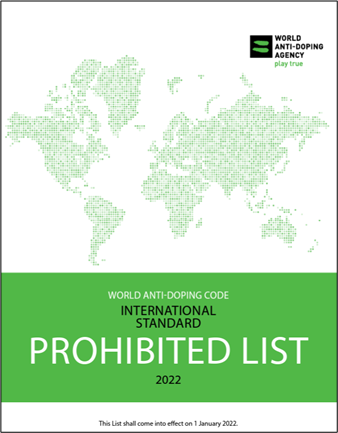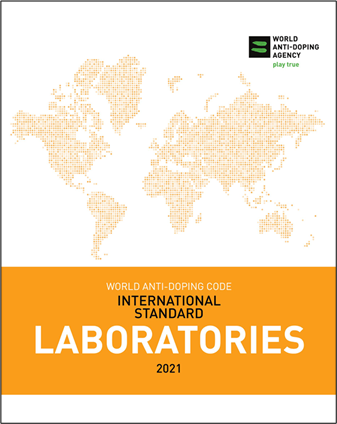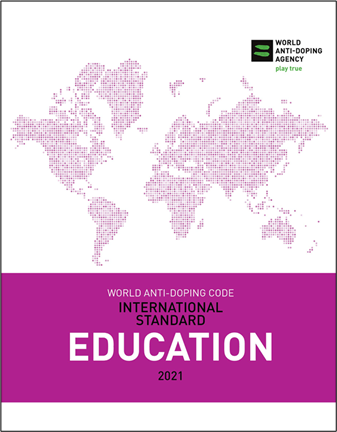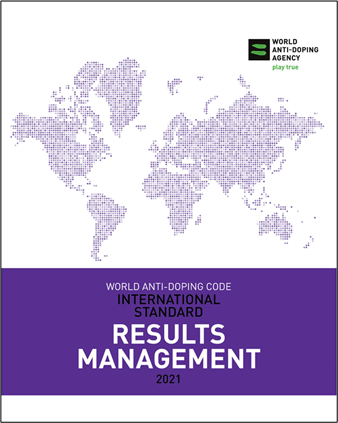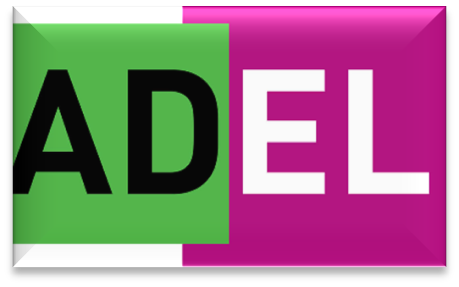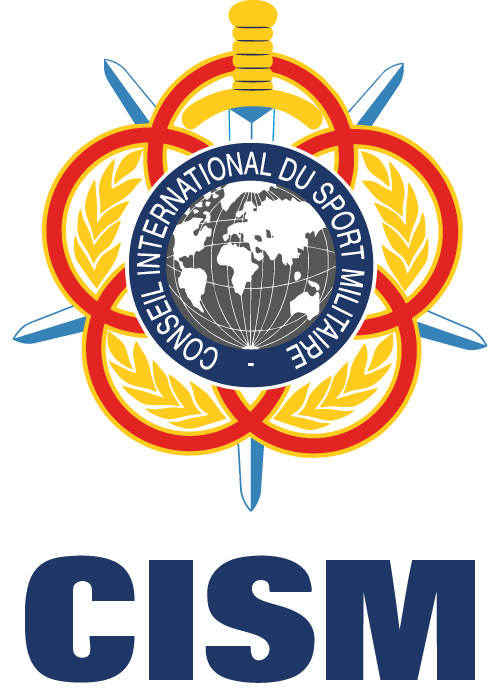Anti Doping
Principles and values associated with clean sport
CISM is based on the intrinsic value of military sports. This intrinsic value is often referred to as “the spirit of sport”. These values are in line with what is foreseen in the CISM Green Paper: Solidarity, Friendship, Respect, Equality, Integrity, and Determination.
CISM seeks to protect the health of Athletes and provide the opportunity for Athletes to achieve human excellence without the Use of Prohibited Substances and Methods.
The CISM Anti-Doping Policy provides for a clean environment for the practice of sports and competitions, in light of the CISM Statutes. This environment is guided by the ethic of human excellence through the dedicated perfection of the natural talents of each Military Athlete.
The organization and operation of CISM must be governed with the conviction that doping should be considered cheating or an unsporting act, as CISM respects and follows the World Anti-Doping Code.
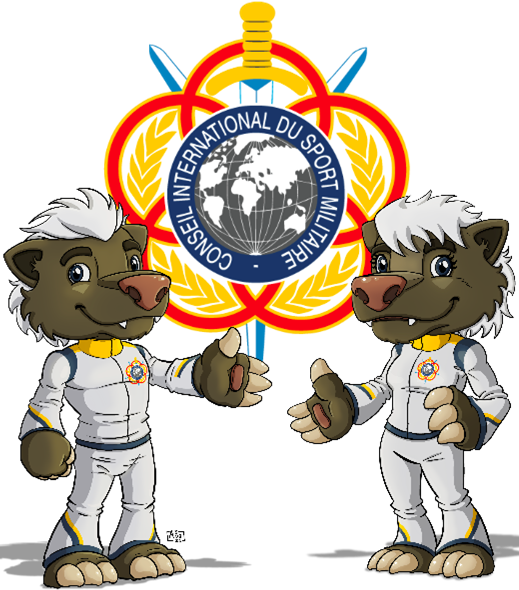
“Sport is not a game you simply win or lose.
Its ethos goes beyond winning.
Win by cheating, and everybody loses.
The community against doping is dedicated to fair competition.
WADA is proud to be the world’s unifying force for doping-free sports.
They exist…to guide…to enable…to inspire athletes and sports to make the right choices.
Together, let’s raise the game, and Play True.”
WADA Code and International Standards
The World Anti-Doping Code (Code) is the core document that harmonizes anti-doping policies, rules, and regulations within sport organizations and among public authorities around the world. It works in conjunction with eight International Standards which aim to foster consistency among anti-doping organizations in various areas.
The Code was first published by the World Anti-Doping Agency in 2003. Before 2003, there was no one standardized set of rules for all sports and countries.
Click on the Cover pictures below to download the World Anti-Doping Code (Code) and International Standards. The safest way always is to go to the WADA website.
CISM Useful resources
Anti-Doping Education and Learning Platform (ADEL)
The global Anti-Doping Education and Learning platform (ADEL) provides education and learning opportunities about clean sport and anti-doping. ADEL has a range of interactive courses and resources (ADEL Academy) as well as opportunities to connect with others involved in anti-doping. CISM and WADA welcome anyone who wants to learn about clean sport.
Being sure of the importance you give to this matter and of the interest of your athletes, coaches and officials, I kindly request you to support a wider dissemination of the above-mentioned opportunity to all the concerned. With the occasion I just wish to highlight the need to register - or change your existing registration - on the ADEL Platform, selecting the name “CISM sports” in the SPORT field as detailed also in the guidelines in "CISM Useful Resources".
CLICK on the logo below to access all this content !
Testing procedures
As CISM is a signatory to the WADA Code, we must follow and ensure that all procedures provided for in this base legislation and all International Standards are performed. In this sense, all athletes who are within our competition environment are subject to out-of-competition and in-competition urine and blood tests. This testing process must be clear as defined by the WADA Code.
Rights & Responsibilities during Sample Collection
Athlete rights during sample collection:
- To have a representative
- To request an interpreter, if one is available
- To ask for Chaperone’s/Doping Control Officer’s identification
- To ask any questions
- To request a delay for a valid reason (e.g., attending a victory ceremony, receiving necessary medical attention, warming down, or finishing a training session)
- To request special assistance
- To record any comments or concerns on the Doping Control Form
Athlete responsibilities during sample collection:
- Report for testing immediately if selected
- Show valid identification (usually a military ID or Official Passport)
- Remain in direct sight of the Doping Control Officer or Chaperone
- Comply with the collection procedure
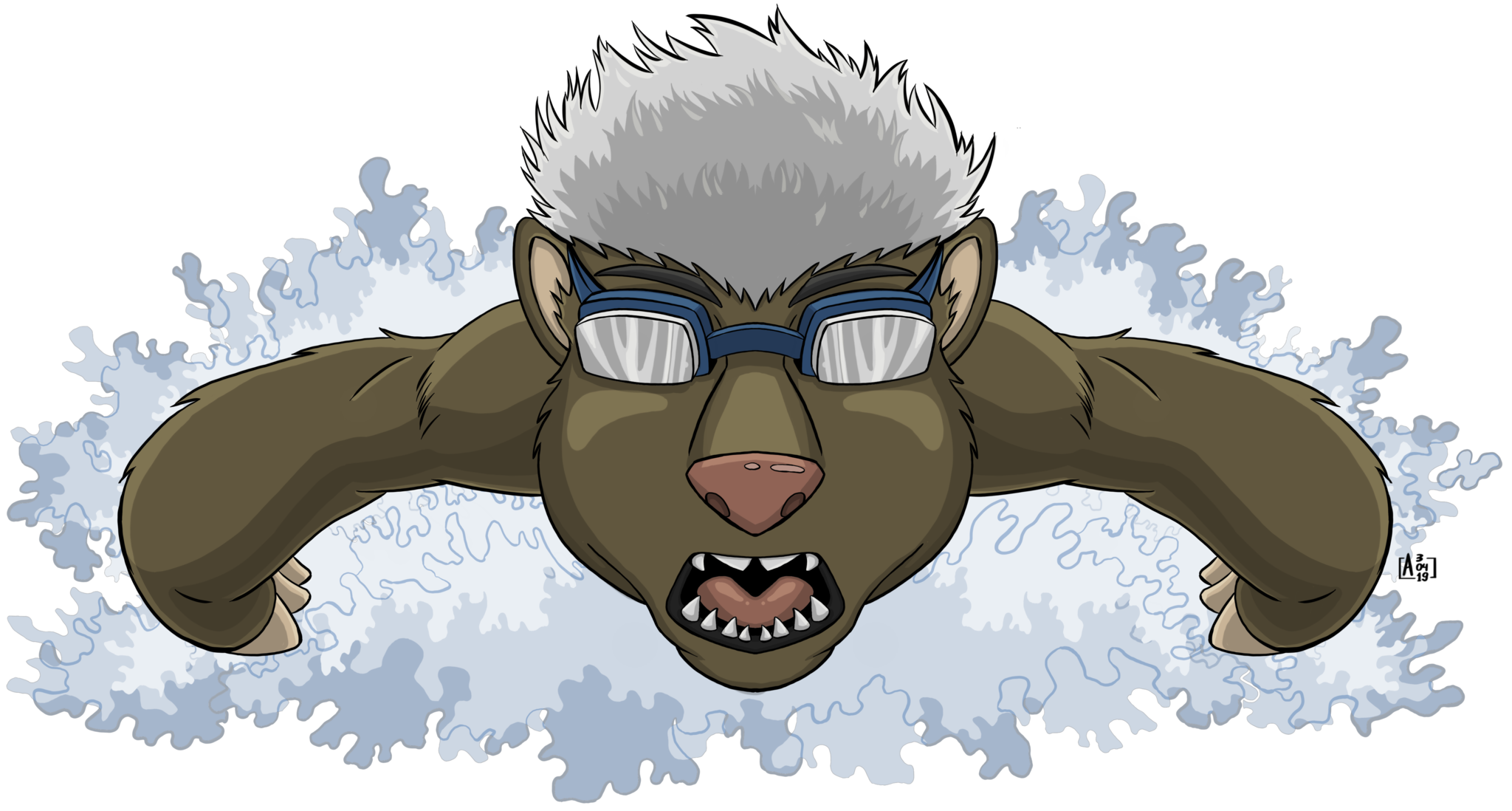
Athlete Biological Passport
The Athlete Biological Passport (ABP) was introduced in 2009 and is a pillar method in the detection of doping. It is an individual electronic profile that monitors selected Athlete biological variables that indirectly reveal the effects of doping.
TUE - Therapeutic Use Exemptions
Some athletes may have illnesses, injuries, or conditions that require them to take medications or some treatment. If the drug or method that an athlete is required to use to treat this condition is prohibited under the World Anti-Doping Agency (WADA) Prohibited List, a TUE can be submitted to the CISM in order to be analyzed and after receiving or not an authorization to continue using that substance or method without considering an anti-doping rule violation (ADRV) and applicable sanction. Applications for TUEs are evaluated by a panel of doctors, the CISM TUE Committee (TUEC).
All the information contained in a TUE application, including the supporting medical information and any other information related to the evaluation of a TUE request, is kept strictly confidential. Athletes must absolutely avoid taking a medication containing a prohibited substance without a valid TUE.
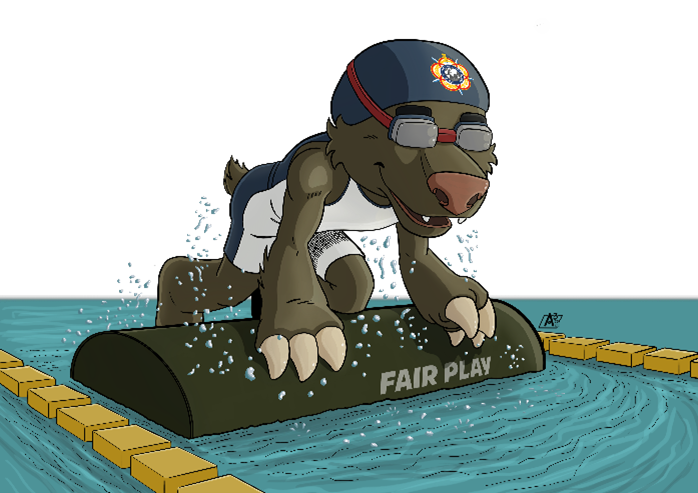
An Athlete may be granted a TUE if (and only if) he/she can show, on the balance of probabilities, that each of the following conditions is met:
- The Prohibited Substance or Prohibited Method in question is needed to treat a diagnosed medical condition supported by relevant clinical evidence.
- The therapeutic use of the substance will not, on a balance of probabilities, produce a significant improvement in performance beyond the athlete's normal state of health.
- The Prohibited Substance or Prohibited Method is an indicated treatment for the medical condition, and there is no reasonable permitted Therapeutic alternative.
- The need to use that substance or method is not a consequence of prior use (without a TUE) of a substance or method that was prohibited at the time of use.
TUE submission process
If the athlete does not already have a TUE granted by their NADO or IF, the athlete must apply for a TUE directly to the CISM (30 days before the event). The TUE granted by CISM will be specific to that requested event and will not be valid for another event. The Therapeutic Use Exemption must always be approved before the initiation of treatment. In an emergency or exceptional case, a retroactive TUE may be granted.

If the athlete participating in any CISM Competition already has a valid TUE issued by their National Anti-Doping Organization or International Federation registered with ADAMS, CISM will also recognize it, but the athlete must inform the CISM Anti-Doping Manager.
To submit a TUE, the Athlte must access the "CISM Useful Resources" on this page and use the TUE Application Form to fill in the information regarding your athlete. The athlete's physician must complete the form and send this document to the CISM Anti-Doping Manager through the CISM Chief of Delegation to CISM.
CISM Anti-Doping Manager (CISM.antidoping@milsport.one)
You can find more information on the members of the TUEC on https://www.milsport.one/cism/cism-staff !
Requirements of the Registered Testing Pool
CISM shall support those athletes registered in ADAMS in their IF or NADO’s Registered Testing Pool (RTP) to continue to comply with their regular obligations to file whereabouts filing information at all times including during the CISM Competition Period.
CISM can require those athletes who are not registered on ADAMS in their IF or NADO RTP to provide arrival, departure, and location information during the CISM Competition. CISM Athletes must keep their Chief of Mission and Team Captain informed of all their positions during the CISM Competition.
Rights and responsibilities under the Code
Roles and Responsibilities of Athletes:
- To be knowledgeable of and comply with all applicable anti-doping policies and rules adopted pursuant to the Code.
- To be available for Sample collection at all times.
- To take responsibility, in the context of antidoping, for what they ingest and Use.
- To inform medical personnel of their obligation not to Use Prohibited Substances and Prohibited Methods and to take responsibility to make sure that any medical treatment received does not violate anti-doping policies and rules adopted pursuant to the Code.
- To disclose to their National Anti-Doping Organization and International Federation any decision by a non-Signatory finding that the Athlete committed an anti-doping rule violation within the previous ten (10) years.
- To cooperate with Anti-Doping Organizations investigating anti-doping rule violations.
- To disclose the identity of their Athlete Support Personnel upon request by any Anti-Doping Organization with authority over the Athlete.
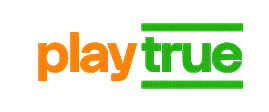
Roles and Responsibilities of Athlete Support Personnel:
- To be knowledgeable of and comply with all antidoping policies and rules adopted pursuant to the Code and which are applicable to them or the Athletes whom they support.
- To cooperate with the Athlete Testing program.
- To use their influence on Athlete values and behavior to foster anti-doping attitudes.
- To disclose to their National Anti-Doping Organization and International Federation any decision by a non-Signatory finding that they committed an anti-doping rule violation within the previous ten (10) years.
- To cooperate with Anti-Doping Organizations investigating anti-doping rule violations.
- Athlete Support Personnel shall not Use or Possess any Prohibited Substance or Prohibited Method without valid justification.

An easy-to-read document is the Athletes’ Anti-Doping Rights Act. This is an important document that consolidates these rights of athletes in the fight against doping. It was written considering the WADA Code and all International Standards with the main objective of guaranteeing athletes' rights to free access and that can be applied to any sporting environment.
The principle of Strict Liability
The principle of strict liability applies whenever an athlete has an adverse analytical result as a result of a urine/blood sample collected.
The Athlete is strictly responsible for any substances found in the results of a collection and an anti-doping rule violation occurs whenever a prohibited substance (or its metabolites or markers) is found in the body sample. This rule works regardless of the athlete's intentions, whether intentional or not.
The rule is that it is not necessary for the Athlete's Intent, Fault, Negligence, or Knowledge of Use to be demonstrated by CISM or any other Anti-Doping Organization to establish an Anti-Doping rule violation.
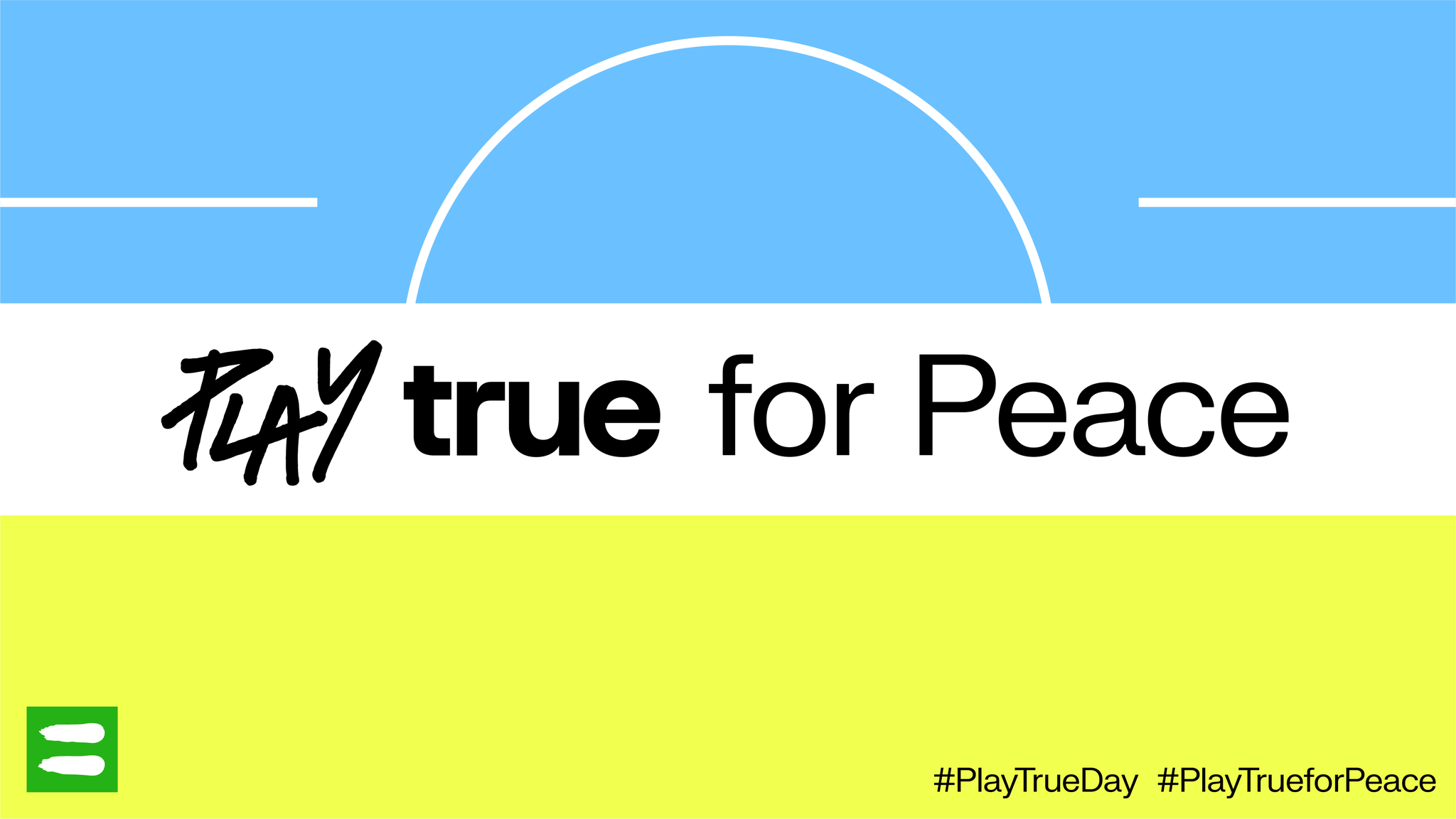
If it is in the athlete’s body, the athlete is responsible for it.
Consequences of doping
An athlete runs very high risks by consuming doping substances or by using prohibited methods. This may result in very severe health but also financial, legal, and social consequences.
Medical consequences
- Physical health: depending on the substance, the dosage, and the consumption frequency, doping products may have particularly negative side effects on health. Some damages to the body are irreversible and may lead that the athlete’s life being in danger.
- Psychological health: some doping substances may not be detrimental to the body, but exercise has an impact on mental health. It was scientifically evidenced that anxiety, obsessive disorders, or psychosis are direct consequences of doping.
Social consequences
The existence of an athlete who was held guilty of doping may be completely disrupted. Indeed, doping may represent a danger to health, but it may also be prejudicial to fame, respect, and creditworthiness. Even future negative findings are regularly questioned by the media and the entourage. The poor image will remain in the collective unconscious and the athlete will remain isolated.

Financial consequences
As regards high-performance sports, an infringement of Anti-Doping rules often leads to a loss of income, the reimbursement of prize money, and sponsorship money. An athlete suspended for several years, or even life-banned, cannot earn his/her living as usual and can even be forced into debt to live on a day-to-day basis.
Legal consequences (Sanctions)
An Anti-Doping Rule Violation (ADRV) may result in Disqualification for the Athlete of results in the event/competition in which the ADRV occurred (if applicable) and of results in competitions after the sample collection. The Athlete is also exposed to a period of ineligibility that ranges from a warning to a lifetime ban from all sports and Public Disclosure of the fact.
Anti-Doping rule violations
Doping is defined as the occurrence of one or more of the following Anti-Doping Rule Violations (ADRVs) which are as follows:
- Presence of a prohibited substance in an Athlete’s sample
- Use or attempted use of a prohibited substance or method
- Refusal to submit to sample collection after being notified
- Failure to file athlete whereabouts information & missed tests
- Tampering with any part of the doping control process
- Possession of a prohibited substance or method
- Trafficking a prohibited substance or method
- Administering or attempting to administer a prohibited substance or method to an Athlete
- Complicity in an ADRV
- Prohibited association with sanctioned Athlete Support Personnel
- Discourage or Retaliate against other Persons from reporting relevant Anti-Doping information to the authorities.
Substances and Methods on the Prohibited List
WADA has been publishing an annual List of Prohibited Substances and Methods (List) since 2004, as mandated by World Anti-Doping Code (Code). WADA’s role, through its List Expert Advisory Group and Health, Medical, and Research Committee, is to facilitate a consultation period before preparing and publishing the List by 1 October in order to allow for its introduction at the start of the following year.
A substance or method can be added to the Prohibited List if it meets at least two of the following three criteria:
- It has the potential to enhance or enhances sport performance.
- Use of the substance or method represents an actual or potential health risk to the athlete.
- Use of the substance or method violates the spirit of sport.
The Prohibited List includes substances and methods that are categorized into three groups:
- Substances and methods prohibited at all times
- Substances and methods prohibited in-competition
- Substances prohibited in particular sports
Risks of supplement use and use of medications
The supplement use by the athlete is always a process of high attention. You never know if the composition of that product is in accordance with the nutritional information provided by the manufacturer. Incorrect supplement information can hide substances that can be detected in Anti-Doping tests. Another possible situation is contamination during the production of the food supplement, sometimes being a low-quality supplement or counterfeit product. The athlete can choose to have a nutritional follow-up with a professional who is used to dealing with the WADA prohibited list.
Checking Medications
As with nutritional monitoring, the athlete may choose to be treated by a physician who is familiar with the WADA Code and Prohibited Stripe. This can certainly help during the preparation phases for the competition and during the competition.
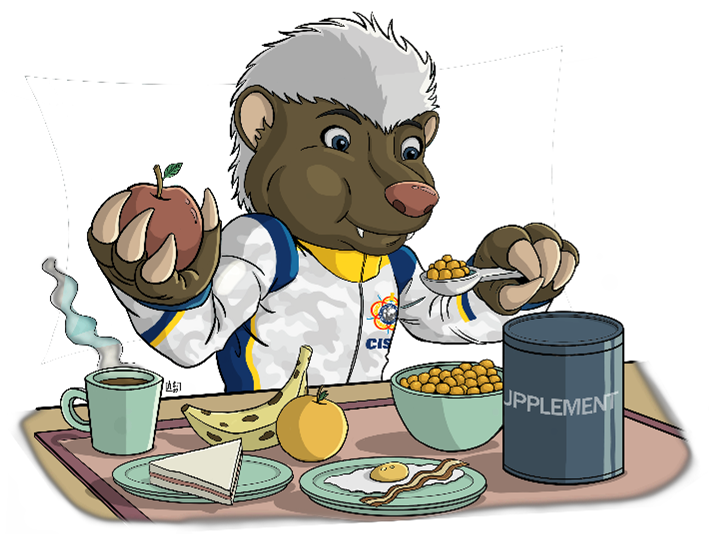
Some guidelines can be adopted to avoid surprises during this walk:
- Attention to the name of the substance and not to the brand of the drug
- Pay attention to dosage restrictions and the relationship with the athlete's gender
- Different substances take different times to leave your system.
- Be careful when switching from one brand of medicine to another as the composition may also be different.
- Regularly check for Prohibited List updates
Speaking up to share concerns about doping
Help us protect the clean athlete and the integrity of sport. Every time someone steps forward with information on doping, we move closer to a clean and fair playing field for all.
We know that coming forward with sensitive information is a big decision – one that you would not enter into lightly. We applaud the courage and conviction required to raise concerns about cheating.
You have chosen to put your trust in us and we take this very seriously. This website is a secure way for you to report activity that you think goes against anti-doping rules.
Whether you decide to open a secure mailbox or provide us with your contact information, everything you tell us is strictly confidential.
CISM Anti-Doping Educational Symbol - “SANGUE-BOM
Preventive methods are important instruments used by the World Anti-doping Agency (WADA) to preserve the spirit of fair play, health, performance, dedication, and respect for the rules and laws that are placed on all participants in sports competitions. However, a major barrier found in educational programs is the diversity of languages and the scarcity of compatible platforms.
The CISM, as a signatory institution of the WADA CODE and its rules, created a mascot (Sangue-Bom) with the intention of breaking the barriers of languages and representing all the values adopted by these renowned institutions.
“Sangue-Bom” represents the CISM spirit of fair play, health, performance, fun, dedication, and respect for rules and laws which are posed to all participants. “Sangue-Bom”, in Portuguese, is an expression that literally means “good blood”, but it is also slanged to describe a person with good character, a true “comrade”, “buddy”, in essence, a good partner.
In short, my name is a simple tribute to all athletes who carry in their hearts the real spirit of sport. The animal is a Honey Badger and wants to be with all the athletes and be a partner in all the CISM competitions. The Sangue Bom as the CISM Anti-Doping symbol is the symbol of a clean and true athlete.
CISM has 74 "Good Blood" images across all our Category 1 sports, men's and women's, and other images on training, feeding, and Fair play promotion. Together, we can preserve the spirit of sport, avoid problems, confirm great results and help competitors to be real champions! CISM encourages your team to share the symbol of fair play in our competitive environment. You can download it by clicking HERE or at CISM Useful Resources by clicking on the item Sangue-Bom Drawings.
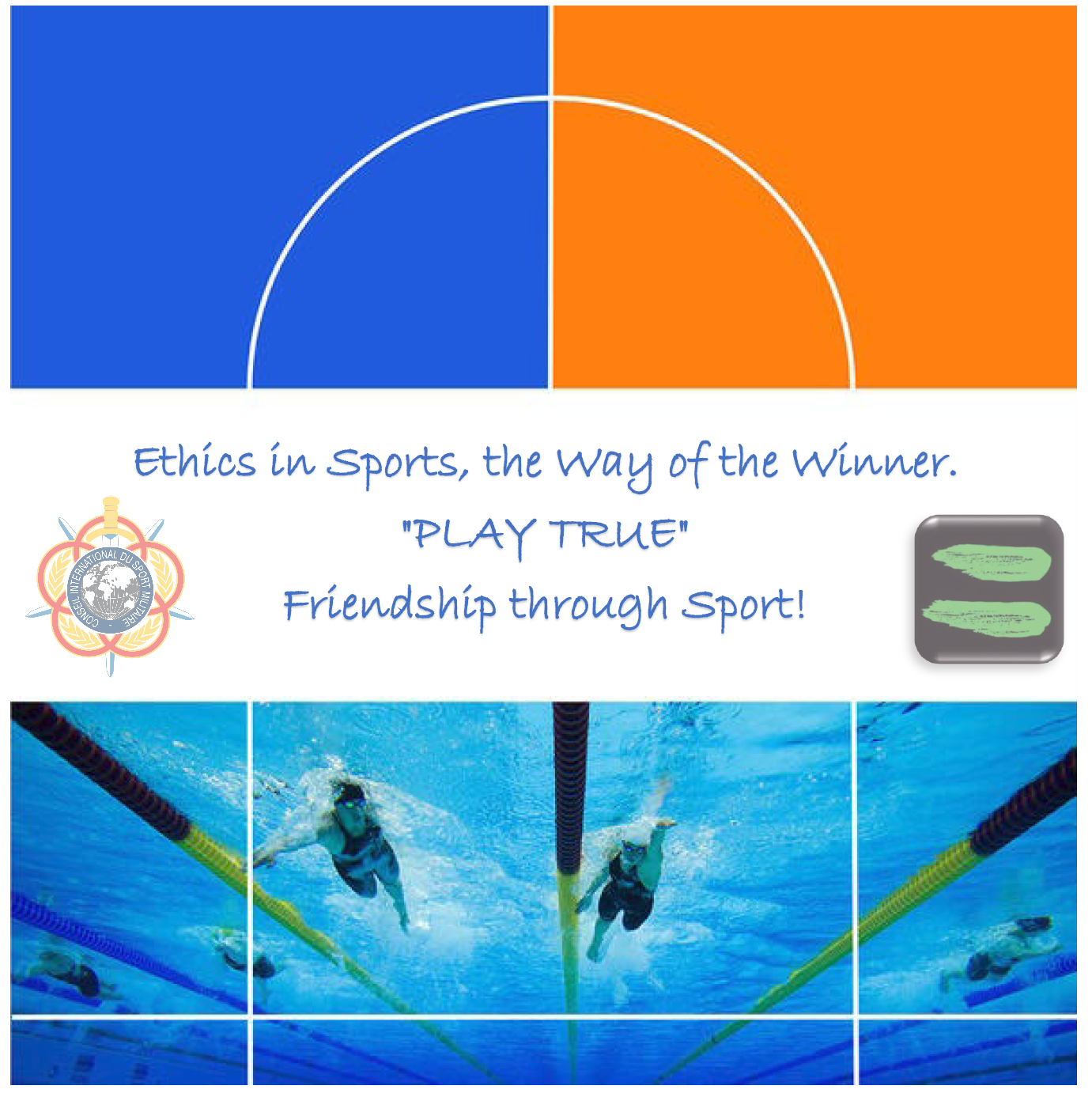
Latest Sanctions
Learn about the latest anti-doping violations and sanctions in CISM events: Latest Sanctions



